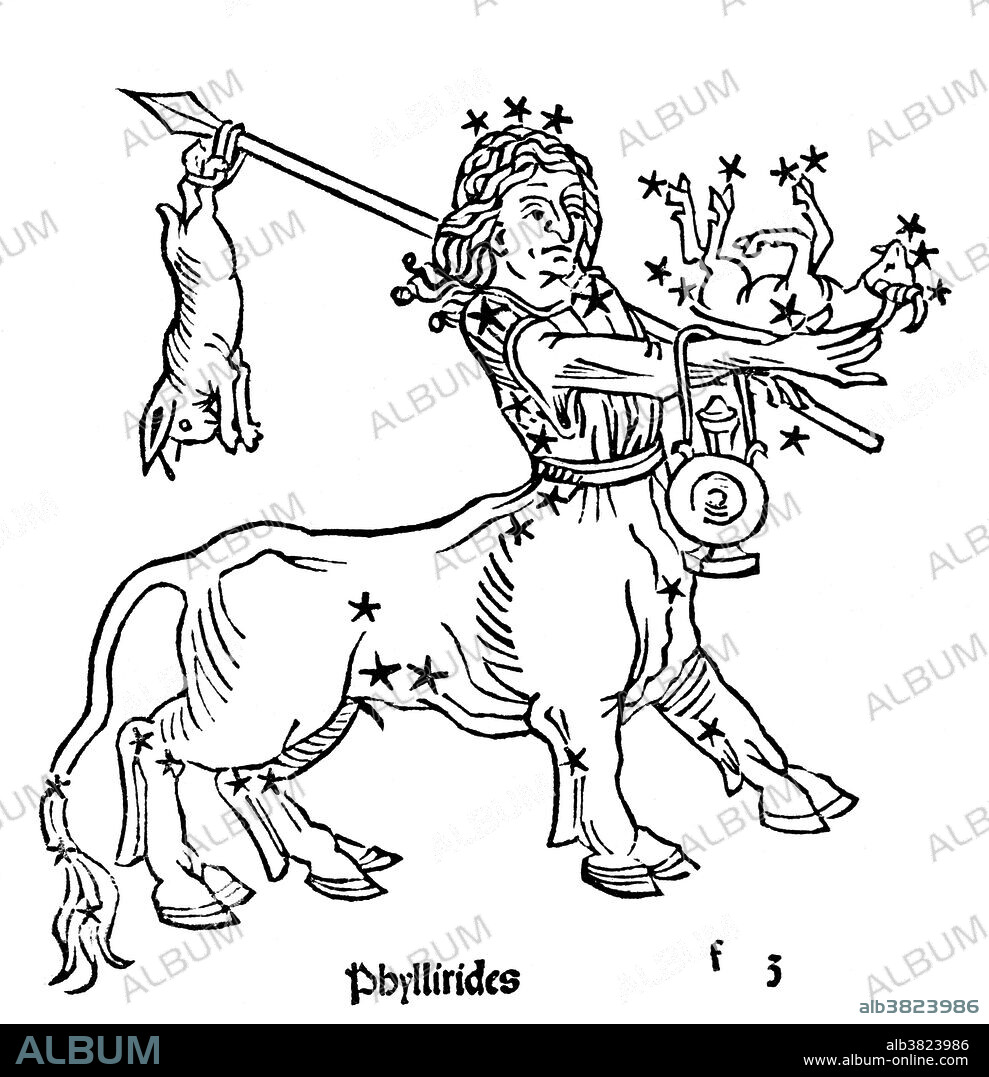alb3823986
Centaurus Constellation, 1482

|
Add to another lightbox |
|
Add to another lightbox |



Title:
Centaurus Constellation, 1482
Caption:
Centaurus is a bright constellation in the southern sky. One of the largest constellations, Centaurus was included among the 48 constellations listed by the 2nd century astronomer Ptolemy, and it remains one of the 88 modern constellations defined by the International Astronomical Union. In Greek mythology, Centaurus represents a centaur; a creature that is half man, half horse. Poeticon astronomicon is a star atlas whose authorship is disputed. The work was originally attributed to the Roman historian Gaius Julius Hyginus (64 BC - AD 17). The book lists most of the constellations in the same order as Ptolemy's Almagest (2nd century AD) which has led many to believe that a more recent Hyginus created the text. The Poeticon astronomicon was not formally published until 1482, by Erhard Ratdolt. He commissioned a series of woodcuts, but the relative positions of the stars bear little resemblance to the descriptions given by Hyginus in the text or the actual positions of the stars in the sky.
Credit:
Album / Science Source / U.S. Naval Observatory Library
Releases:
Model: No - Property: No
Rights questions?
Rights questions?
Image size:
3900 x 4037 px | 45.0 MB
Print size:
33.0 x 34.2 cm | 13.0 x 13.5 in (300 dpi)
Keywords:
1482 • 15TH CENTURY • ART • ARTWORK • ASTERISM • ASTRONOMICAL • ASTRONOMY • BW • CELEBRITY • CELESTIAL ATLAS • CELESTIAL BODY • CELESTIAL SPHERE • CELESTIAL • CENTAUR • CENTAURS • CENTAURUS • CONSTELLATION • DRAWING • FAMOUS • HEAVENLY BODY • HEAVENLY • HISTORIC • HISTORICAL • HISTORY • HYGINUS • ILLUSTRATION • IMPORTANT • MEDIEVAL • MIDDLE AGES • MYTHOLOGICAL ANIMAL: CENTAUR • NOTABLE • PATTERN OF STARS • POETICON ASTRONOMICON • SCIENCE • STAR ATLAS • STAR CHART • STAR MAP • WELL-KNOWN • WOODBLOCK • WOODCUT • XYLOGRAPHY
 Pinterest
Pinterest Twitter
Twitter Facebook
Facebook Copy link
Copy link Email
Email
